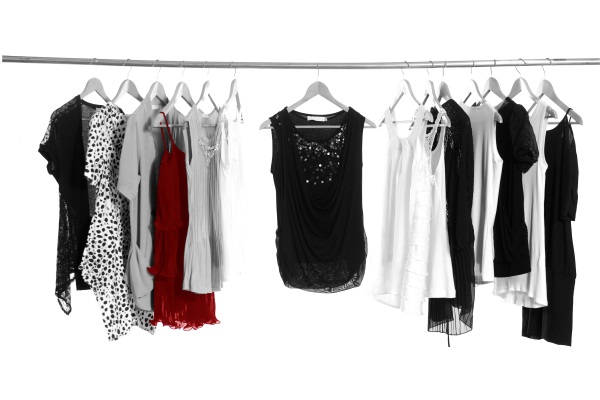
Among the many industries affected by the $1.7trn trade in illegally imitated products—that's the yearly value of counterfeited and pirated goods all over the Internet, according to 2015 estimates—one has emerged as particularly vulnerable: fashion.
Any unique or innovative product may inspire fakes and illegal replicas, victimizing shoppers and manufacturers alike. But fashion brands attract counterfeiters to the same of-the-moment, expensive brands most desired by the stylish and the cool. The value of imitation goods could reach $2.8trn) by 2022, bolstered by the constant push to exploit high-demand products like Michael Kors bags or Yeezy shoes from Adidas. Experts predict the number of companies seeking protection from counterfeiters to double or even triple by then.
For fashion brands, the long-term injury to their image can be even more painful than the financial losses. "Once the damage is done, especially to a company's reputation, it can be difficult to claw your way back," explains Laura Urquizu, CEO of Red Points, a global leader in brand and copyright protection. She cites Michael Kors as one anecdotal example. "It's a company with excellent designs and a strong brand, but it's suffered from such a high level of counterfeiting in recent years that 'is it real?' has become the first question people ask of someone carrying an MK bag. Instead of instantly conveying the social status associated with the brand, there's an element of doubt."
Once the company begins protecting a brand, the number of imitations typically decreases within a few months and stabilizes at a lower rate because counterfeiters switch to easier targets, Urquizu explains—that is, similar but unprotected products. Fashion breaks this pattern, however, because there's rarely a profitable substitute for the brand names in greatest demand among consumers.
"Fashion products are not bought solely for their functionality, but also for the brand's associated social benefits, so counterfeiters cannot switch brands easily when compared to more practical products," the CEO says. "Because of the popularity of some 'trending' brands, counterfeiters will try to capitalize on them and continue to sell illegal versions regardless of how difficult it becomes."
Fashion brands make up approximately 20 per cent of the clients Red Point serves, yet account for some 30 per cent of the total infringements it detects. "These brands are severely affected throughout the year," Urquizu says. "We've found that they need around-the-clock protection." For example, the company detected 11,000 intellectual property (IP) infringements for one Red Points fashion client in Q1 2017, and even this early in Q2 expects to find an equal, if not higher, number by the end of the current quarter.
The secrecy surrounding an illicit enterprise makes it virtually impossible to calculate precisely how many businesses around the world are affected by counterfeiting; however, it's clear that the crime touches almost every industry, from car parts to pharmaceuticals, from makeup to lighting. Red Points has found that roughly 10 per cent of companies face a serious threat of intellectual property abuse and product infringement, including small brands that might mistakenly believe they'd never be targeted.
Each time a counterfeit product is sold, a legitimate sale is lost to the owners of the genuine product. The cost of those lost sales is estimated at $590bn today, and projected to hit $1.2bn a year by 2022. The overall cost to the global economy is another matter, and a tricky metric to establish because variables like price disparity and availability must be factored in; however, the International Chamber of Commerce expects the total economic cost of "displaced" transactions and profits, missing tax revenues, and disappearing jobs to reach $4.2trn by 2022.
It's a fast-growing market (as evidenced by a consistent month-over-month increase in business at Red Points), with predictable spikes for particular products at particular times, mirroring the sales patterns of genuine products. As the summer months approach, for instance, more counterfeit sunglasses appear online; in January, fake fitness gear peaks. And during the December holidays, fake e-commerce activity increases right along with legitimate activity.
As counterfeiters become more sophisticated they're able to better predict and react to consumer demands more of the time. For example, Red Points has found that once a brand is protected, counterfeiters will work around that barrier by using obscure or coded search terms rather than the brand name.
Small businesses and others hoping to deal with counterfeiting and piracy on their own typically rely on a time-consuming and tedious manual process, which requires the dedicated time of at least one staffer to search the Internet for fake items—frequently enough to prevent them from selling—and to document thousands of IP infringements. It's also necessary for a lawyer with IP expertise to oversee the process.
This outdated approach is by no means dynamic enough to meet modern demands, according to Red Points' Urquizu, but it's still better than ignoring the problem. "Our advice is to act, and act quickly. Even if the action is a slow manual process, it's better than leaving your brand or designs to, in effect, become common property." The CEO adds that taking action is especially important for small companies that have developed "ingenious designs. It's a mistake to think that your company is too small to be concerned, or that the people buying fakes are not your customers."
More important advice: It's crucial to register designs and patents in China "above all else," Urquizu says, and to make sure your intellectual property has "active protection. Otherwise, counterfeits and replicas will appear and take sales away from the genuine producer." She cites Forearm Forklift as an unfortunate example of a product exploited by ruthless counterfeiters.
Red Points believes that many companies will need technological solutions to adapt to a greater volume of violations in the years ahead, and to address the threat more efficiently for improved customer service. As one example, Red Points deploys machine-learning programs that automatically update search parameters based on new findings. "Any company that is serious about their protection and wants to 'future proof' their IP protection should consider a logical approach. In the next five years, it will become the norm as traditional methods buckle under the pressure of new infringements," Urquizu explains. "It will become increasingly apparent which companies are protected and which are not."
Hawkers, a sunglasses company based in Spain that distributes its products via the Internet, is a Red Points user. "Our primary focus is to protect our brand," says Anna Carbonell of the Hawkers legal department. "Thanks to Red Points we have been able to put an end to infringements of our brand online, and it allows us to protect all of Hawkers' digital activities."
About Red Points
Red Points is a global leader in brand and copyright protection, combining proprietary technology with unmatched legal, technical, and analytical expertise to defend international brands and online content providers against counterfeiting and digital piracy. Red Points is the preferred brand protection partner for prestigious global brands and content owners in the sporting, entertainment, fashion, editorial, design and luxury industries, providing unique services across the entire digital spectrum. The company is devoted to protecting creativity, innovation, and design since our founding in 2011.
 | back to top
| back to top






